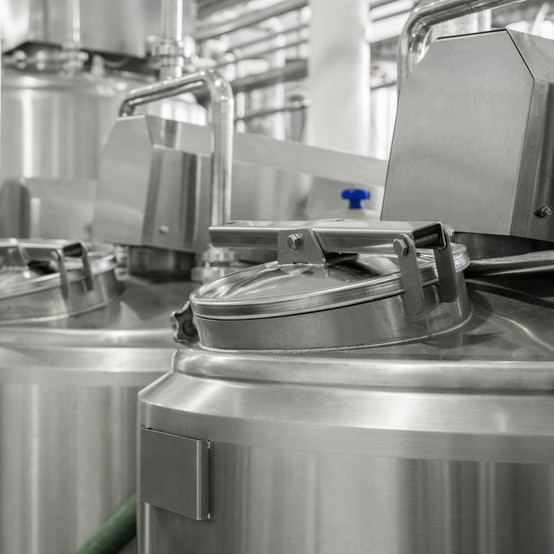
Liquid Storage
What is Liquid Storage?
Liquid storage is an important unit operation in food processing. It encompasses storing liquid ingredients in safety vessels to protect them from microbial deterioration, dust particles and insects. Designing proper storage facilities should take into consideration factors such as the type of liquid to be stored and its susceptibility to microbial contamination.1
Commonly used liquid storage units include vertical containers or tanks made up of safe materials. In baked goods production, typical liquid storage ingredients include:1
- Dairy products
- Sugar and syrups
- Oils
- Flavors & liquid yeasts
How does it work?
Equipment used in storing liquid ingredients such as vats, vessels and tanks and fittings must comply with food safety regulations. Typically, they must be made of epoxy or stainless steel such as 3-A.1
Critical factors to be considered for liquid storage equipment include:2
- Product to be stored
- Handling of the product and its physical characteristics
- Environmental conditions
- Construction material:
- Pipelines must be rigidly supported
- Pipelines strainers and magnets must be used on the suction side of the pump
- Hygienic conditions:
- Self-draining installation of pipe systems without sags where the product could accumulate
- Clean-in-Place systems must have weld fittings
Liquid storage parameters
Several parameters are involved in designing liquid storage equipment, such as:1
- Nature of the food product: solution, dispersion, etc.
- Density of liquid product: to help determine accurate tank volume
- Temperature: must be set appropriately to avoid fluctuations in density and viscosity of the food product, as well preserve its overall quality
- Environment: humidity, access to production area, etc.
Types of liquid storage equipments
Following is a summary of liquid storage equipment and their characteristics:2
| Equipment | Usage | Advantages | Disadvantages |
| Vats/vessels | Small quantities of liquid or highly viscous foods |
|
|
| Tanks | Liquid foods |
|
|
Application
Essential storage requirements for liquid ingredients in bakery operations:1,3
| Food Product | Temperature | Equipment Considerations | Consequences of Inappropriate Storage |
| Milk and milk products | Maximum allowed temperature 7 °C (45 °F)
Refrigeration temperatura 1-3 °C (34-38 °F) |
|
|
| Sugar and syrups | High moisture syrup must be refrigerated at 4°C (40°F) |
|
Not affected by bacteria, but may support mold and yeast growth |
| Eggs and egg products | Below 4°C (40°F) |
|
They pose the highest microbial risk of all ingredients. |
| Oils | Room temperature or cool storage |
|
They may develop off flavors due to oxidative rancidity and absorption of odors. |
References
- Heldman, D. R and Lund, D.B. Handbook of food engineering. 2nd ed., CRC press, 2006, pp. 354-358.
- Saravacos, G. D. and Kostaropoulos, A.E.. Handbook of food processing equipment. 1st ed., Kluwer Academic/Plenum, 2002.
- Figoni, P. How Baking Works: Exploring The Fundamentals Of Baking Science. 2 nd ed., John Wiley & Sons, Inc., 2008.

